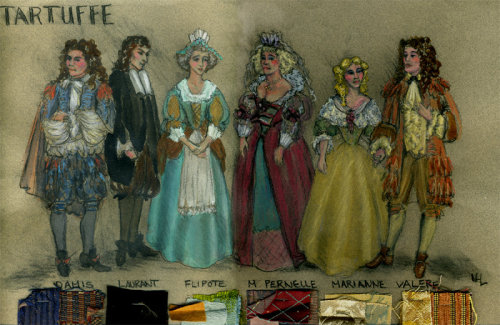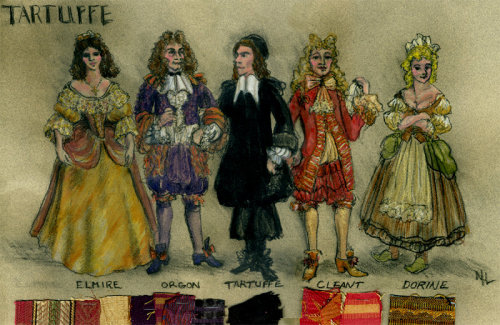Madame Pernelle is back, and as crazy, and irritating, as ever. Madame Pernelle is not listening to reason and dismisses Orgon as Orgon did to the rest of the family. Orgon gets a taste of his own medicine and feels the angst that his family felt.
Tartuffe 51
Orgon gives Tartuffe the home, and prior gave him papers of evidence that can possibly place Orgon in a legal mess. There is no sound reasoning for trusting Tartuffe like this. Orgon is even more a fool than thought before. Orgon seems to have learned the wrong lesson and is going to go about in the opposite extreme. Cleante is presenting Orgon with the correct lesson to be learned. Hopefully, Orgon will heed the words from Cleante.
In act I of Tartuffe, Orgon comes home and asks Dorine…

In act I of Tartuffe, Orgon comes home and asks Dorine (Orgon’s daughter’s maid) if everyone was well while he was away. Dorine replies that Orgon’s wife, Elmire, was very ill while he was away and that she was so ill and feverish that she even had to be bled. Above is an image of a bleeding bowl from around this time. It was believed by physicians at the time that expelling the toxins in the blood by removal would rid the body of the illness. This resulted in a high mortality rate. Even so, they still continued with the practice until the late 19th century.
All images: Google image search.
Madame Pernelle – Mother of Orgon – Most Rediculous Character!
There are several words that came to mind when I was first introduced to this character. The two I decided on were termagant and shrew. A termagant is a harsh-tempered or overbearing woman. Also described as violent, turbulent, brawling and/or shrewish. Shrew being a woman of violent temper and speech.
Definition descriptions taken from Dictionary.com
These images are design sheets from a costume designer for the…


These images are design sheets from a costume designer for the play, however I am unsure of the date of their creation.
All images: Google image search.
This is the mistress of King Louis XIV. I selected these…


This is the mistress of King Louis XIV. I selected these paintings to illustrate the women’s fashion of the time.
All images: Google image search.
These are examples of the fashion for men during the time of…


These are examples of the fashion for men during the time of Tartuffe.
All images: Google image search.
Tartuffe!!
Molière wrote Tartuffe in 1664. It was written in French and almost immediately censored by King Louis the XIV probably due to the influence of the Archbishop of Paris, who was the King’s confessor and had been his tutor.
Though Tartuffe was received well by the public and even by Louis XIV, it immediately sparked conflict amongst many different groups who were offended by the play. The factions opposed to Molière’s work included part of the hierarchy of the French Roman Catholic Church, members of upper-class French society, and the illegal underground organization called the Compagnie du Saint-Sacrement.
Tartuffe’s popularity was cut short when the Archbishop of Paris issued an edict threatening excommunication for anyone who watched, performed in, or read the play. Molière attempted to assuage church officials by re-writing his play to seem more secular and less critical of religion, but the church could not be budged.
The revised version of the play was called L’imposteur and had a main character titled Panulphe instead of Tartuffe. Even throughout Molière’s conflict with the church, Louis XIV continued to support the playwright; it is possible that without the King’s support, Molière might have been excommunicated. Although public performances of the play were banned, private performances for the French aristocracy were permitted.
In 1669, after Molière’s detractors lost much of their influence, he was finally allowed to perform the final version of his play. However, due to all the controversy surrounding Tartuffe, Molière mostly refrained from writing such incisive plays as this one again.
– Information found on Wikipedia